
Frailea is a genus of globular to short cylindrical cacti native to South America. These species are cleistogamous. They were first classified in the genus Echinocactus.

The Cactoideae are the largest subfamily of the cactus family, Cactaceae. Around 80% of cactus species belong to this subfamily. As of August 2018, the internal classification of the family Cactaceae remained uncertain and subject to change. A classification incorporating many of the insights from the molecular studies was produced by Nyffeler and Eggli in 2010. Various revisions have been published since, e.g. to the tribe Hylocereeae and the tribe Echinocereeae. Classifications remained uncertain as of March 2019.

Parodia buiningii is a rare species of cactus native to South America. It is a solitary spherical or oblate cactus only a few inches in height with long, yellow spines. It bears yellow flowers, and produces hairy fruit and black seeds. It is found surrounding the towns of Santana do Livramento, Brazil and Rivera, Uruguay.

The Orto Botanico dell'Università di Pavia also known as the Orto Botanico di Pavia, is a botanical garden maintained by the University of Pavia. It is located at Via S. Epifanio, 14, Pavia, Italy, and is open to the public on weekends. The botanical garden covers an area of about two hectares and has approximately two thousand different species of plants, which are organised in sections. The current director is Francesco Sartori.The Botanical Garden stands in the place where the church of Saint Epiphanius was located, of which it preserves the cloister of the 15th century.

In botany, succulent plants, also known as succulents, are plants with parts that are thickened, fleshy, and engorged, usually to retain water in arid climates or soil conditions. The word succulent comes from the Latin word sucus, meaning "juice" or "sap".

Parodia tenuicylindrica is a species of cactus from the genus Parodia. The small green cacti have yellow and red-brown spines, white wool and yellow flowers. They produce yellow-green fruit, and black seeds. P. tenuicylindrica can be found growing individually in Rio Grande do Sul, Brazil.

Parodia arnostiana is a species of cactus in the genus Parodia. The small, squat green plants produce yellow flowers, green fruit and black seeds. The species is found growing in Rio Grande do Sul, Brazil.

Gymnocalycium eurypleurum is a small "chin cactus" that is highly prized by cactus collectors and is known to be fairly easy to grow, albeit very slow It has been cultivated outside in latitudes as far north as Modesto, California. In the wild, the species is almost always solitary (non-clumping) and may grow in association with Frailea species. The species when grown in the greenhouse is also known for its fidelity to wild specimens. It is said to live in seasonally very dry habitat, clay soils between 6.8–7.2 pH, and maximum temperatures to 50 °C (122 °F). Gymnocalycium eurypleurum is an endemic specie from Paraguay.

Notocacteae is a tribe of cacti belonging to the subfamily Cactoideae.

Frailea castanea is a species of Frailea found in Argentina, Brazil and Uruguay.

Frailea cataphracta is a species of Frailea from Paraguay.
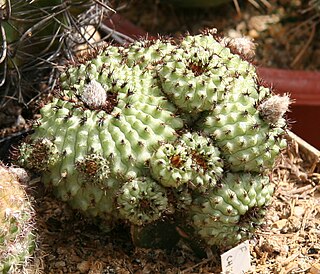
Frailea chiquitana is a species of Frailea from Bolivia.

Frailea curvispina is a species of Frailea from Brazil.
Frailea gracillima is a species of Frailea from Brazil, Paraguay, and Uruguay.
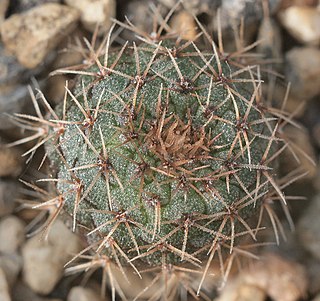
Frailea phaeodisca is a species of Frailea from Brazil and Uruguay.
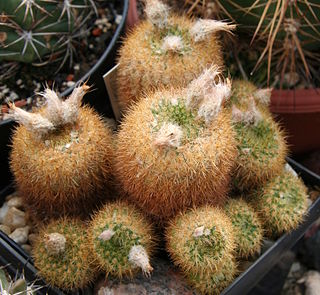
Frailea pumila is a species of Frailea from Brazil, Argentina, and Uruguay.
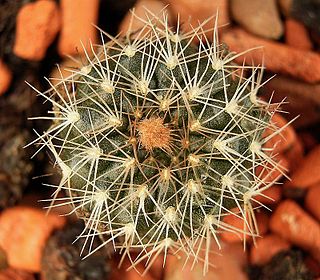
Frailea pygmaea is a species of Frailea from Bolivia, Argentina, and Uruguay.
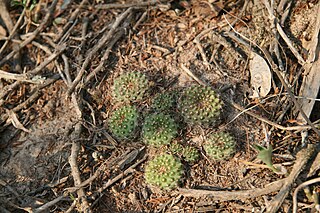
Frailea schilinzkyana is a species of Frailea from Brazil to Argentina.

Molinaranea is a genus of South American orb-weaver spiders first described by Cândido Firmino de Mello-Leitão in 1940.
Chondromorpha is a genus of millipedes belonging to the family Paradoxosomatidae.


















